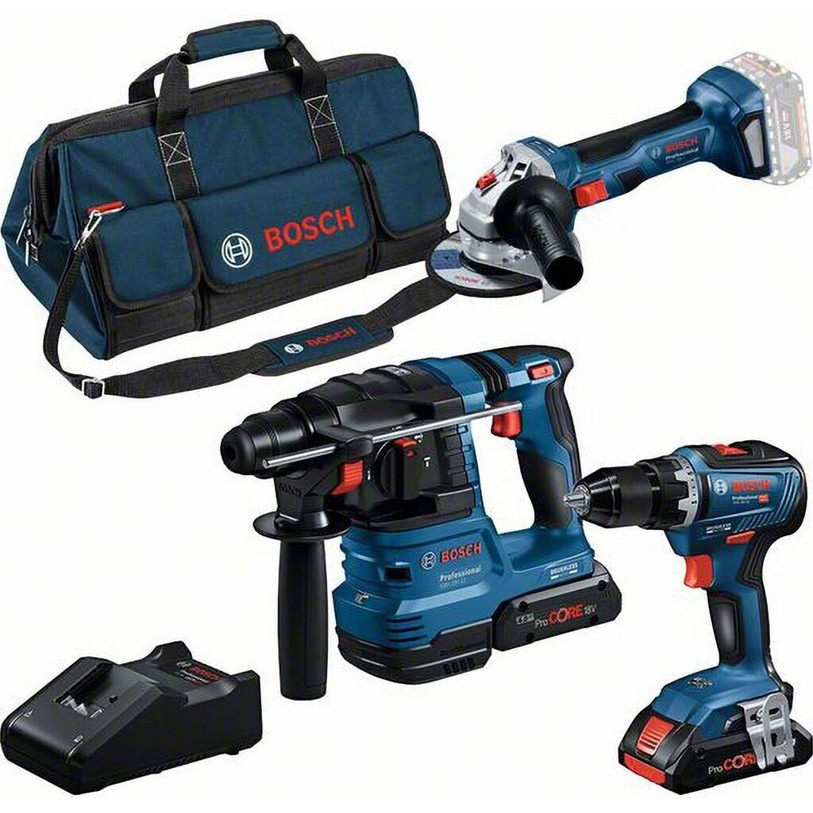Exploring the Wall Chaser for Concrete Work: A Comprehensive Guide
Dealing with concrete needs precision and the right tools to make sure safety and accuracy. One such necessary tool that is gaining popularity among professionals and DIY enthusiasts alike is the wall chaser. This powerful device is specifically created to cut narrow grooves into walls, making it possible for the installation of electrical channels, pipes, or cable electrical wiring. This article delves into the ins and outs of wall chasers for concrete, highlighting their features, advantages, how to utilize them efficiently, and responses to often asked questions.
What is a Wall Chaser?
A wall chaser, also referred to as a wall groove cutting machine, is a specialized tool that creates cool, precise cavities in walls. Akku Maschinen Set 18v uses two parallel diamond blades to cut a groove into numerous materials, consisting of concrete, brick, and masonry. Built to handle tough products, the wall chaser is a vital resource for constructors seeking to attain professional surfaces in wall adjustment jobs.
Key Features of a Wall Chaser
| Feature | Description |
|---|---|
| Blades | Typically includes two parallel diamond blades. |
| Motor Power | Differs from 1200W to 2200W, offering ample strength. |
| Cutting Depth | Adjustable cutting depth, generally approximately 30mm. |
| Weight | Light-weight designs (5kg) and sturdy models (10kg). |
| Dust Extraction | Built-in vacuum adapter for minimal dust during cutting. |
| Safety Features | Guard to prevent particles from triggering damage. |
Benefits of Using a Wall Chaser
- Accuracy Cuts: Unlike traditional tools, wall chasers ensure clean, narrow grooves that lower the quantity of product requiring removal.
- Versatility: Suitable for various products, making it an excellent option for concrete, brick, and block walls.
- Time-Efficiency: Reduces labor time substantially compared to manual chiselling.
- Minimized Dust: Many models come geared up with dust extraction, reducing mess and improving air quality.
- User-Friendly: Designed with ergonomics in mind, making it easier to work for prolonged periods without significant tiredness.
How to Use a Wall Chaser Effectively
Utilizing a wall chaser might seem simple, however following an organized technique boosts safety and performance. Here's a detailed guide:
Step 1: Preparation
- Step and Mark: Use a measuring tape to identify the exact location for the groove. Mark the details with a pencil.
- Gather Tools: Ensure that you have the wall chaser, security goggles, dust mask, and hearing defense.
Step 2: Set Up the Wall Chaser
- Change Depth: Determine the needed cutting depth and adjust the blade settings on the tool.
- Examine Blades: Ensure the diamond blades are sharp and properly lined up.
Step 3: Safety First
- Wear Protective Gear: Always wear safety goggles and a dust mask to protect against inhalation of dust particles or flying particles.
Step 4: Cutting the Groove
- Position the Chaser: Align the wall chaser with the significant line.
- Start With Light Pressure: Turn on the machine and begin cutting the groove, applying light pressure to let the tool do the work.
- Follow the Mark: Maintain a consistent hand and follow the significant lines to guarantee precision.
- Dust Management: If your design accommodates a vacuum accessory, ensure it's functional to collect dust as you cut.
Step 5: Final Touches
- Clean the Area: Once the cutting is done, clean up debris and dust from the workspace.
- Examine the Groove: Ensure the grooves are the correct depth and width for your specific job requirements.
Common Applications of Wall Chasers
- Electrical wiring Installations: Perfect for embedding electrical wires into walls without affecting structural stability.
- Pipes Work: Ideal for creating channels for pipelines in concrete walls.
- Cooling And Heating Systems: Facilitates the installation of duct systems that require precise grooves.
- Restorations and Remodeling: Simplifies the procedure of customizing existing structures.
Maintenance Tips for Wall Chasers
- Routine Cleaning: Clean the blades and machine to safeguard against dust accumulation.
- Inspect Blade Condition: Inspect for wear and tear, changing blades as necessary.
- Store Properly: Keep in a dry place to avoid rusting or damage to electronic components.
Frequently Asked Questions About Wall Chasers
Q1: Can I utilize a wall chaser on brick walls?
Yes, wall chasers can be used on brick walls due to their versatile style and powerful blades.
Q2: How deep can a wall chaser cut?
Most wall chasers can cut up to 30mm deep, but this varies by model. Always refer to the manufacturer's specifications.
Q3: Are wall chasers suitable for DIY projects?
Absolutely! While they are frequently used by professionals, DIY lovers can use wall chasers with suitable security precautions.
Q4: Do I need a dust extraction system when utilizing a wall chaser?
While not mandatory, using a dust extraction system can significantly decrease dust and improve visibility during cutting.
Q5: How do I understand if the blades need replacing?
If the cuts end up being rough, or if the blades appear worn or harmed, it's time to replace them.
The wall chaser for concrete work is an essential tool that improves effectiveness and promotes precision in wall modifications. By understanding its functions, advantages, and correct use, both specialists and DIYers can raise their concrete working abilities. Whether you're circuitry, plumbing, or remodeling, buying a wall chaser can save effort and time while ensuring a refined surface.

